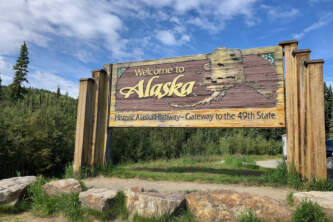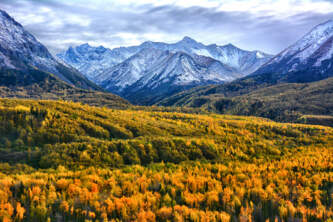Glacier Viewing Advice & Information
The dynamics of snow and ice still rule Alaska’s coastal mountains, making Southcentral and Southeastern regions among the best places in the world to experience active glaciers.
- Stay well back from the face of any melting glacier—one-ton chunks can fall on you. Don’t duck beneath royal-blue overhangs or enter melt-water caverns, no matter how gorgeous or inviting they appear.
- Traveling onto the surface of a glacier usually requires expert assistance and technical gear like crampons, ice axes and ropes. Hidden crevasses and slippery drain holes (called moulins) are potentially fatal hazards. Unless you’re prepared and trained, or working with a guide, it’s best to stay off.
- Glaciers and snowfields amplify sunlight. If you spend more than a few minutes viewing or exploring a glacier during a sunny summer afternoon, you may need to protect yourself against intense glare and sunburn. Consider carrying sunblock, sunglasses and a billed cap.
- A chilly wind often blows from the toe of a glacier, spilling the colder, heavier air mass of its mountain-bound accumulation zone. Even on sunny days, be prepared for a 10-to-20-degree drop in temperature. Carry insulating clothing or wind gear, plus perhaps a hat, gloves and buff.
Glacier Tidbits:
- Visualize glaciers as frozen rivers oozing downhill. Time-lapse photography of active tidewater glaciers makes them appear like conveyer belts that deliver ice to the sea.
- Alaska may have at least 100,000 glaciers, most arrayed in the coastal mountains from British Columbia to the Alaska Peninsula, and in the Alaska Range. Only about 600 have names.
- Their ice covers about 29,000 square miles—enough territory to bury West Virginia with plenty of space left over to hide Connecticut. That’s about 5 percent of Alaska’s immense geography.
- Alaska’s biggest is the Bering Glacier, located about 225 miles southeast of Anchorage near the ocean east of Prince William Sound and the Copper River Delta. Its size—2,250 square miles—would cover one-and-one-half Rhode Islands.
- Mountain glaciers grow or shrink based on whether total summer melt overwhelms the total yearly snowfall, what scientists call “mass balance.” But glaciers that terminate in water are more complicated. Once the face of a tidewater or lake glacier slips off its underwater moraine, the glacier will usually keep retreating until it reaches stable ground, no matter how much it snows in the winter. So some water-ending glaciers might not be shrinking in total mass even as they spend the summer choking their fiords with floating ice. Alaska’s tidewater glaciers have retreated and advanced many times over millennia.
- Still, most of Alaska’s glaciers are currently losing mass, a trend that began two centuries ago and appears to be accelerating. As a result, Alaska has become a major contributor to global sea level rise. Some mountain glaciers have recently exposed dramatic terrain that can be explored on foot, and some tidewater glaciers are opening new fiords freshly navigable by tour boat and kayak.



